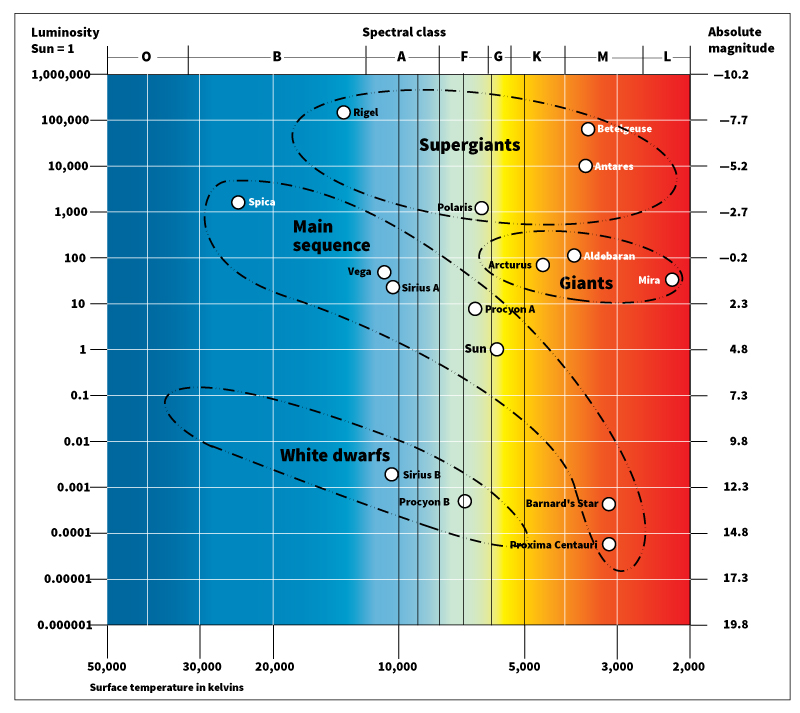Main-sequence star is a star that produces nearly all of its energy by combining hydrogen nuclei to form helium nuclei in its core. This reaction, a type of nuclear fusion, gives off a tremendous amount of energy. Main-sequence stars include our sun and most of the other stars in our galaxy.

The term main sequence comes from a graph known as the Hertzsprung-Russell diagram. The diagram charts stars according to their luminosity (rate of energy output) and surface temperature. About 90 percent of the stars we can see fall in a roughly diagonal band of the diagram that stretches from low luminosity and temperature to high luminosity and temperature. Astronomers call this band the main sequence. Throughout the main sequence, luminosity and mass (amount of matter) generally increase with surface temperature—that is, more massive main-sequence stars tend to have hotter surfaces and give off more energy than less massive ones.
Given enough time, the core of a main-sequence star will use up all its hydrogen fuel. When this happens, the star’s size, temperature, and structure begin to change. The star leaves the main sequence, expanding and cooling to become a red giant or red supergiant . The lowest mass main-sequence stars do not become red giants or red supergiants. When they exhaust their fuel, they collapse to form a type of burned-out star known as a white dwarf .
The amount of time a star remains on the main sequence depends on its mass. High-mass stars fuse hydrogen much more rapidly than lower mass stars. Thus, although high mass stars start with much more fuel, they burn out more quickly. The most massive stars stay on the main sequence for only a few million years. Stars with approximately the mass of the sun can remain on the main sequence for billions of years. Stars smaller than the sun use up hydrogen even more slowly. The lowest mass stars can stay on the main sequence for 100 billion to 1 trillion years, a period much longer than the current age of the universe.
